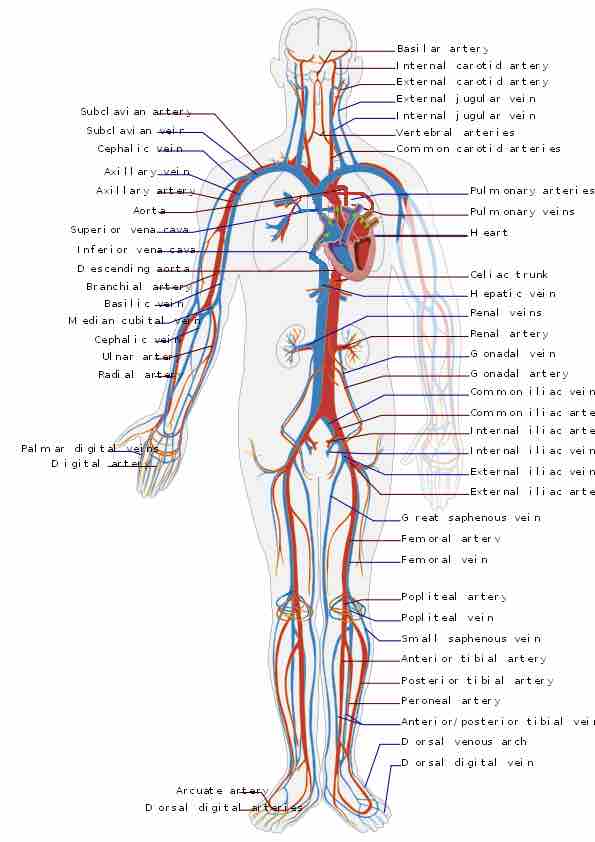The cardiovascular center forms part of the autonomic nervous system and is responsible for regulation of cardiac output. Located in the medulla oblongata, the cardiovascular center contains three distinct components: the cardioaccelerator center, the cardioinhibitor center, and the vasomotor center.
The cardioaccelerator center stimulates cardiac function by regulating heart rate and stroke volume via sympathetic stimulation from the cardiac accelerator nerve. The cardioinhibitor center slows cardiac function by decreasing heart rate and stroke volume via parasympathetic stimulation from the vagus nerve. The vasomotor center controls vessel tone or contraction of the smooth muscle in the tunica media. Changes in diameter affect peripheral resistance, pressure, and flow, which in turn affect cardiac output. The majority of these neurons act via the release of the neurotransmitter norepinephrine from sympathetic neurons. Although each center functions independently, they are not anatomically distinct.
The cardiovascular center can respond to numerous stimuli. Hormones such as epinephrine and norepinephrine or changes in pH such as acidification due to carbon dioxide accumulation in a tissue during exercise are detected by chemoreceptors. Baroreceptors that detect stretch can also signal to the cardiovascular center to alter heart rate.

Human circulatory system
The cardiovascular system is composed largely of the circulatory system, or the system of blood vessels that distributes oxygen from the lungs throughout the body.